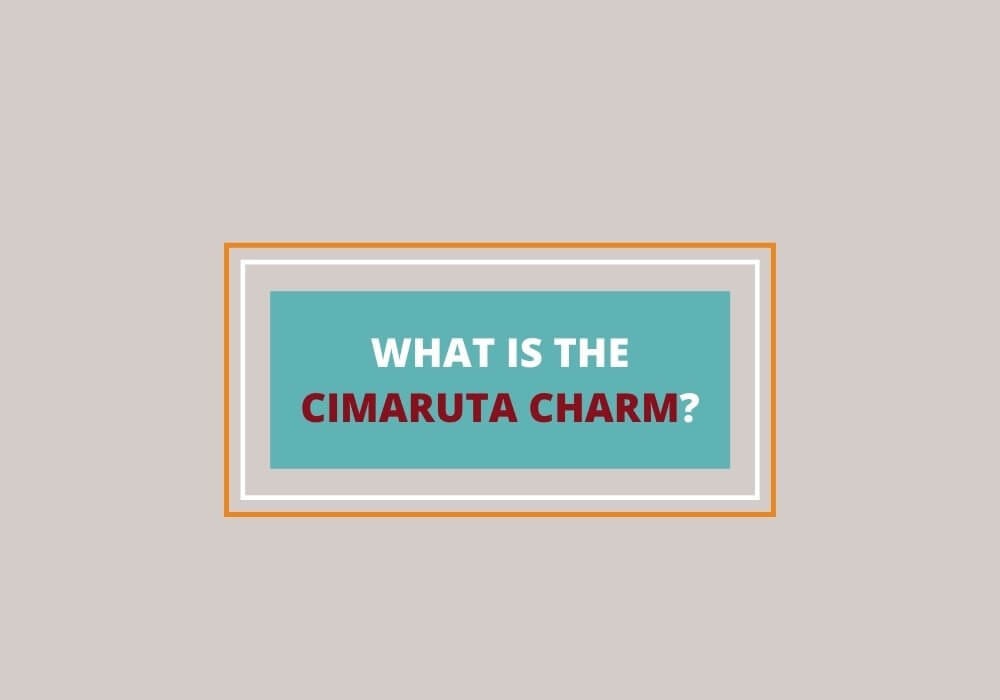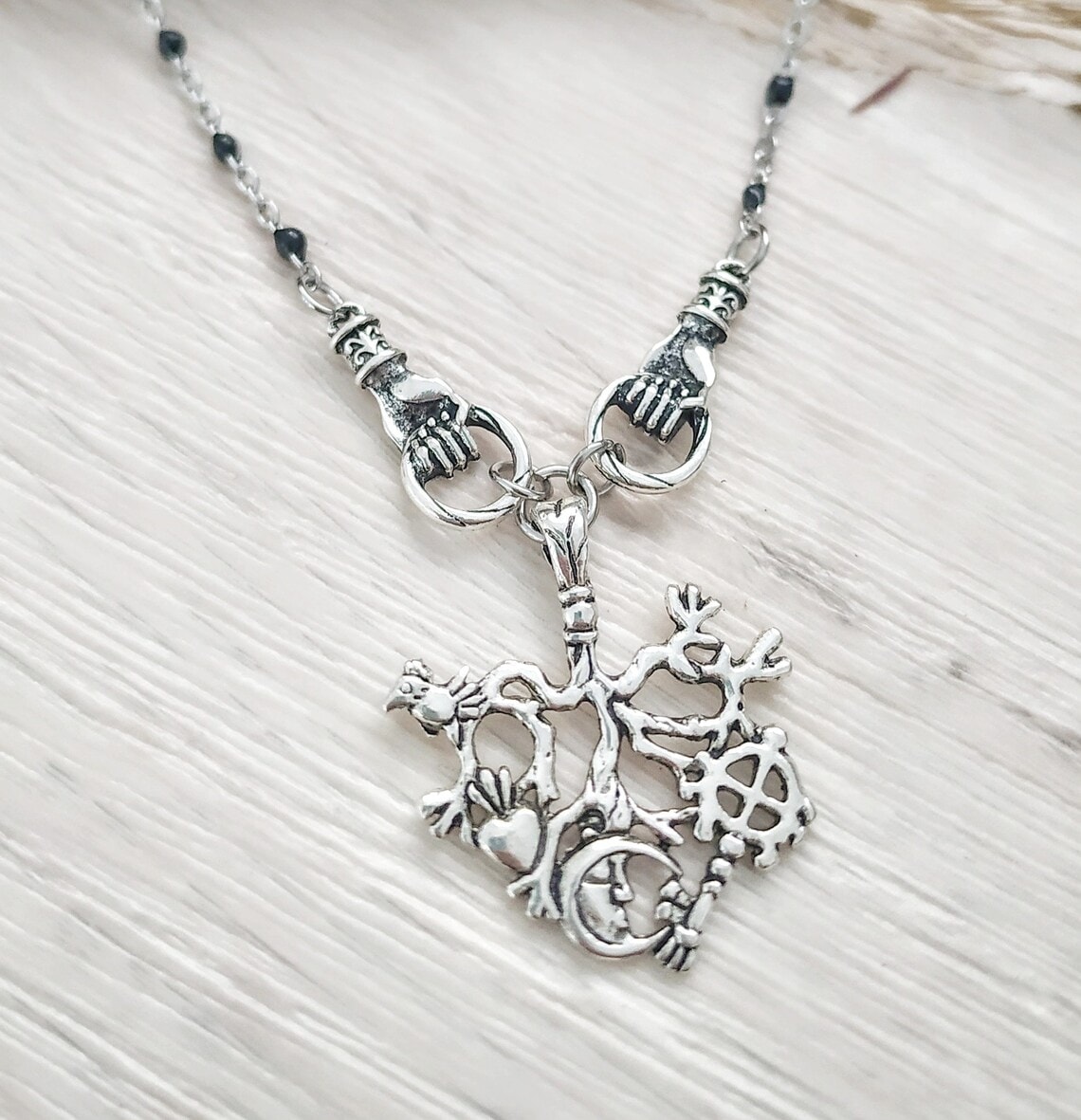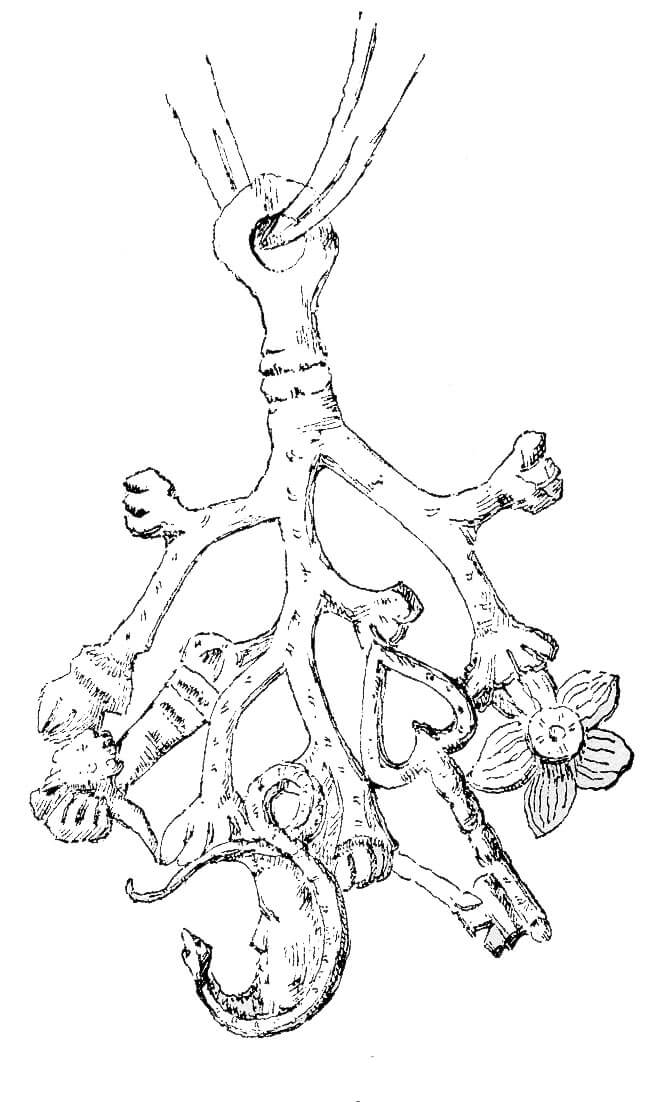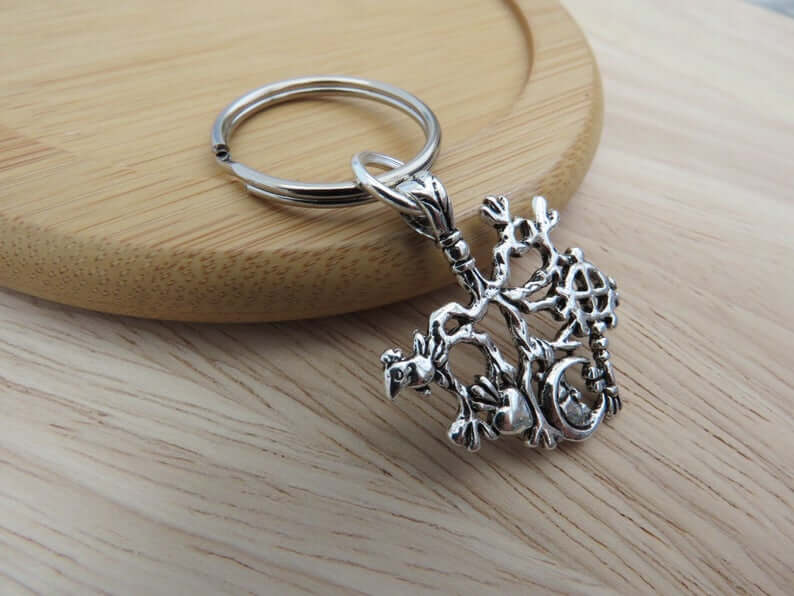
Table of Contents
One of the very oldest existing amulets, the cimaruta is a Roman protective charm, featuring a sprig of rue with several apotropaic symbols to ward off evil. Like many of the lasting ancient symbols, this charm has a long and elaborate history—and its appeal has continued to the present day. In fact, the cimaruta can be viewed as the forerunner to today’s popular charm bracelet.
History of the Cimaruta Charm
Named after the medicinal herb “rue,” the “cimaruta” is a Neapolitan form of Italian term “cima di ruta” which translates as “sprig of rue.” In the late 19th century writings of folklorists, it is referred to as black magic and a charm against “jettatura” or a curse of the evil eye, especially for infants.

According to The Evil Eye: An Account of this Ancient and Widespread Superstition, the charm has an Etruscan or early Phoenician origin, as no other ancient example of similar amulet has been found throughout the Roman or medieval periods—except the one in the Bologna Museum, which is an Etruscan amulet made of bronze.
The design consists of different individual amulets that exist separately and function as a charm. In fact, the 19th century cimaruta featured objects such as:
- Hand
- Moon
- Key
- Flower
- Horn
- Fish
- Rooster
- Eagle

Later, other symbols were added such as:
- Heart
- Serpent
- Cornucopia
- Cherub
It is believed that the later addition of the heart and cherub is a reflection of the Catholic ideology.
Cimaruta and Witchcraft
Also called a “witch’s charm,” the cimaruta was believed to be originally worn by witches as a sign of their secret society. According to the Old World Witchcraft: Ancient Ways for Modern Days, the symbolism of the charm is more associated with the practice of witchcraft rather than protection.
However, most scholars insist that it’s an anti-witchcraft charm, relying on the folk tradition of the period. It’s gained a reputation as an anti-witchcraft charm. Many speculate that the reason lies in the rue plant itself, which has medicinal properties and is even regarded as a protection against poisoning or sorcery.
Nowadays, the cimaruta is used as a protective symbol against evil and enchantments.
Meaning and Symbolism of Cimaruta Charm
The cimaruta charm, inspired by the rue plant known for its healing qualities and role in antidotes, embodies significant symbolism. It mainly acts as a strong shield, offering protection against witchcraft, the evil eye, and harmful magic.
The design of the charm, with its three branches, represents the Roman goddess Diana in her triple form, Diana Triformis, covering her aspects as Diana, Luna, and Hecate. This link to Diana highlights the charm’s connection to divine protection and power.
The use of silver to make the cimaruta isn’t random; it’s because silver is considered Diana’s metal, boosting the charm’s protective and mystical properties.
A variety of apotropaic symbols are attached to the ends of the charm. Here are some of the interpretations of the symbols:
- Hand – The “mano fico” or fig hand represents the strength to fight evil. In the occult symbols of magic, the hand is used to summon spirits and cast spells. In popular folk traditions, the fig hand is a culturally insulting gesture intended to drive away evil intent. In other cultures, it’s a gesture to wish someone good luck and fertility.
- Moon – The lunar emblem in the crescent form is believed to be a symbol of protection, as well as a representation of Diana as the goddess of the moon.
- Key – Some associate it with Hecate, a goddess of magic and witchcraft, as key is one of her primary symbols.
- Flower – Various plants and trees are regarded as a protection against enchantments. Also, the lotus flower is regarded as the symbol of of Diana.
- Horn – A symbol of power and virility. Some believe that the symbolism is rooted inpaganism, as well as witchcraft since the horned goats had a strong connection to witches.
- Rooster – A representation of a watchful guardian, or even a symbol of sunrise and an end to the realm of night. In mythology, it is a symbol of Mercury, denoting vigilance.
- Serpent – In Catholic beliefs, the serpent stands for the Devil, and it’s also associated with witchcraft. However, in an infant’s amulet, the serpent represents health and healing.
- Heart – Catholicism played a huge role in late Italian paganism, so it is regarded as an ancient Christian symbol, a “heart of Jesus,” which is related to the cross (Latin cross). However, ancient Roman charms were depicted with a heart symbol too, suggesting that the element isn’t a new addition.
Cimaruta Charm in Jewelry and Fashion

Cimaruta by Wytchywood. See it here.
Nowadays, the cimaruta is regarded as a good luck charm, especially in Italy. The symbol is a common motif in silver jewelry from necklace pendants to lockets, bracelet charms and rings. While silver chains are common in necklaces, floral-shaped chains, coral beads and ribbons are popular too.
When it comes to earrings, most pieces are designed with individual charms or a mix of different symbols instead of an elaborate motif. Some cimaruta pieces are decorated with colorful gemstones, while others are depicted with triquetra, fairies, deities, and even Wicca symbolisms such as the pentagram.
Wrapping Up
The cimaruta charm may have evolved from ancient Etruscan amulets and was later adopted by the Romans, but its significance remains strong up to the present day as a symbol of protection against the evil. It was the original charm bracelet, and even today, is still highly popular.








